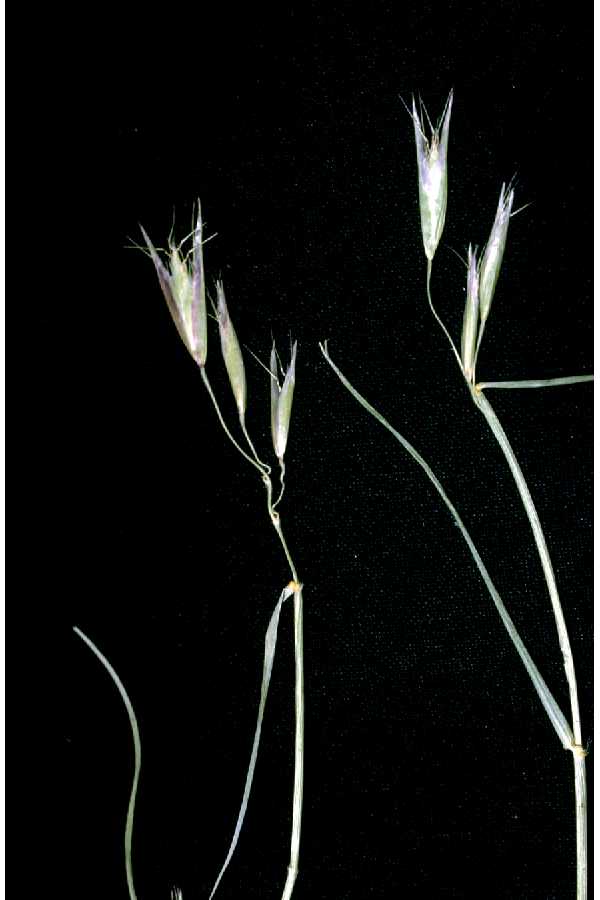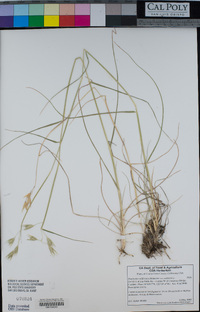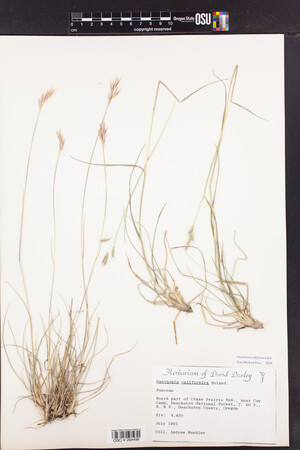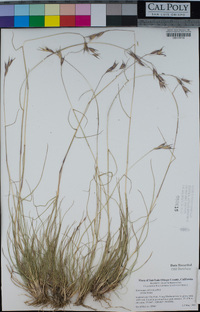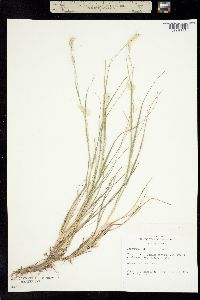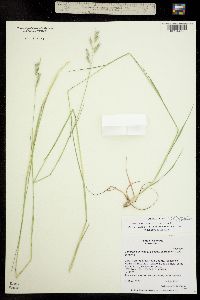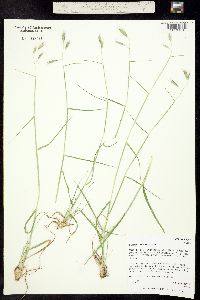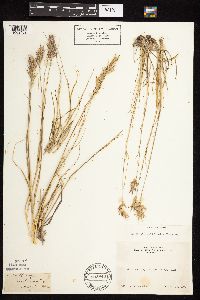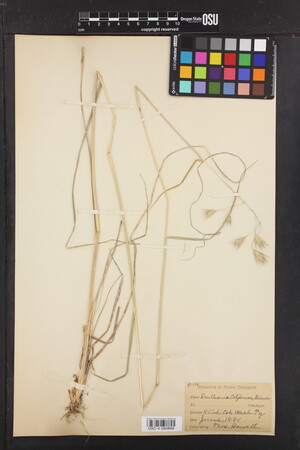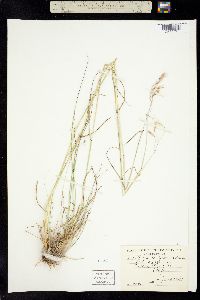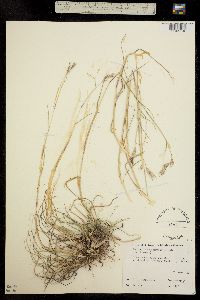
|
|
|
|
Family: Poaceae
California oatgrass, more...California Wild Oat Grass
[Danthonia americana Scribn., moreDanthonia californica var. americana (Scribn.) A.S. Hitchc., Danthonia californica var. californica , Danthonia californica var. palousensis St. John, Danthonia californica var. piperi St. John, Pentameris californica (Bol.) A. Nelson & J.F. Macbr.] |
Culms (10)30-130 cm, disarticulating at the nodes at maturity. Sheaths glabrous or pilose, upper sheaths usually glabrous or unevenly pilose; blades 10-30 cm long, (1)2-5(6) mm wide, flat to rolled or involute, glabrous or pilose, uppermost cauline blades strongly divergent to reflexed at maturity. Inflorescences usually racemose, with (2)3-6(10) widely-spreading spikelets; branches flexible, strongly divergent to reflexed at maturity, pulvini usually present at the base; pedicels on the lowest branch longer than the spikelets, often crinkled. Spikelets (10)14-26(30) mm. Calluses of middle florets usually longer than wide, concave abaxially; lemma bodies 5-10 mm, glabrous or sparsely pilose over the back, margins pubescent (rarely glabrous), apical teeth (2)4-6(7) mm, aristate; awns (7)8-12 mm; anthers to 4 mm. Caryopses 2.5-4.2 mm long, 1.3-1.6 mm wide. 2n = 36. Danthonia californica grows in prairies, meadows, and open woods. It has a disjunct distribution, one portion of its range being located in western North America, the other in Chile. An introduced population has been found at Mansfield, Massachusetts. Plants with pilose foliage have been called D. californica var. americana (Scribn.) Hitchc. and plants with sparsely pilose lemma backs D. californica var. macounii Hitchc., but the variation does not appear to be taxonomically significant. FNA 2003, Gould 1980 Common Name: California oatgrass Duration: Perennial Nativity: Native Lifeform: Graminoid General: Small tufted perennial with stems 30-130 cm tall, disarticulating at the nodes at anthesis. Vegetative: Glabrous or pilose sheaths, upper sheaths usually glabrous or unevenly pilose; blades 10-30 cm long, 2-5 mm wide, flat to rolled or involute, glabrous or pilose, uppermost cauline blades strongly divergent to reflexed at maturity. Inflorescence: Usually racemose, with 3-6 widely spreading spikelets, branches flexible, strongly divergent to reflexed at maturity, pulvini usually present at the base, pedicels on the lowest branch longer than the spikelets, often crinkled; spikelets 14-26 mm, calluses of middle florets usually longer than wide, concave below; lemma bodies 5-10 mm, glabrous or sparsely pilose over the back, pubescent margins, with apical teen 4-6 mm, aristate; awns 8-12 mm. Ecology: Found in meadows, rocky slopes, woodlands and grasslands from 5,000-10,000 ft (1524-3048 m); flowers July-September. Notes: At first glance this species can easily be confused with Bromus, but pay attention to the pilose sheaths, particularly at the nodes along with the geniculate and twisted awn at the end of the glumes. Bromes are usually barbed and have straight mucros. Ethnobotany: Unknown Etymology: Danthonia is named for Etienne Danthoine, an 18th-19th century French botanist, while californica means of or from California. Synonyms: Danthonia americana, D. californica var. americana, D. californica var. californica, D. californica var. palousensis, D. californica var. piperi Editor: SBuckley, 2010 |

